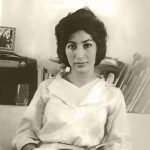Affiliation:
Location:
Field of Interest:
Website:
Hillmann, Michael Craig
In the mid-1970s, Michael co-founded The Academy of Language in Tehran, a language institute offering Persian language instruction at all levels to mostly British and American business, government, and university people. In 1977, back in the States, Michael founded Persepolis Institute (persepolisinstitute.org) which, based in Austin, Texas, continued the work of The Academy of Language. Over the years, MIchael and his Persepolis colleagues designed and implemented one-week, two-week, three-week, and five-week, intensive Persian seminars and immersions for government, business, and university experts in Persian over winter holidays, spring breaks, and during the summer months. Since 2005, Michael has turned his attention to the development of a Persian textbook series called Persian for America(ns)®, which consists of these four volumes: ‘Persian Listening’, ‘Persian Reading and Writing’ (2010), ‘Persian Grammar and Verbs’ (2012), and ‘Persian Conversation(s)’ (2014). He is also working with a team designing three Persian dictionaries and an ‘Advanced Persian Reader’.
Contributions

In mid-1977, as unrest in Iran was percolating that would lead to the Iranian Revolution of 1978 and the establishment…

